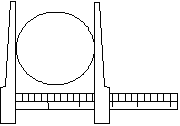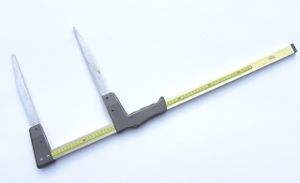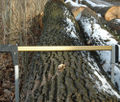Caliper
| Line 10: | Line 10: | ||
[[File:caliper.jpg|thumb|right|300px|Typical example of a caliper (60 cm).]] | [[File:caliper.jpg|thumb|right|300px|Typical example of a caliper (60 cm).]] | ||
| − | + | <gallery width=300px height=300px> | |
| − | + | File:using a caliper.jpg|How to use a caliper. | |
| + | File:caliper-01.jpg|How to use a caliper. | ||
[[Electronic calipers]] had been developed that measure diameter electronically; the diameter is then either read from a display or directly stored in a memory chip or the measurement is via wireless directly transferred to a mobile computer that the field crew carries along. There are various successful examples of using electronic calipers; but in most [[Forest inventory|inventories]] the benefit in terms of rationalization of procedures is relatively modest compared to the high cost of electronic calipers. | [[Electronic calipers]] had been developed that measure diameter electronically; the diameter is then either read from a display or directly stored in a memory chip or the measurement is via wireless directly transferred to a mobile computer that the field crew carries along. There are various successful examples of using electronic calipers; but in most [[Forest inventory|inventories]] the benefit in terms of rationalization of procedures is relatively modest compared to the high cost of electronic calipers. | ||
Revision as of 21:08, 13 June 2012

General description
The caliper is one of the most efficient tools to measure stem diameters directly wherever one has direct access to the stem. An ordinary caliper, constructed of metal or wood, consists of a graduated beam with two arms perpendicular to it. One arm is used at the origin of the scale and the other arm slides (Figure 1). When the beam is pressed against the tree and the arms are closed, the tree diameter can be read on the scale.
There are some calipers with a set of fixed arms also. The graduations are calibrated so that, when the fork is placed on the tree, the points of tangency indicate the tree diameter. Nowadays, aluminum calipers have replaced the wooden and steel calipers. As wooden calipers have tendency to wearing and tearing whereas steel ones are too heavy to carry in forest.
- ==Handling==
- ==References==
Cite error:
<ref> tags exist, but no <references/> tag was found


